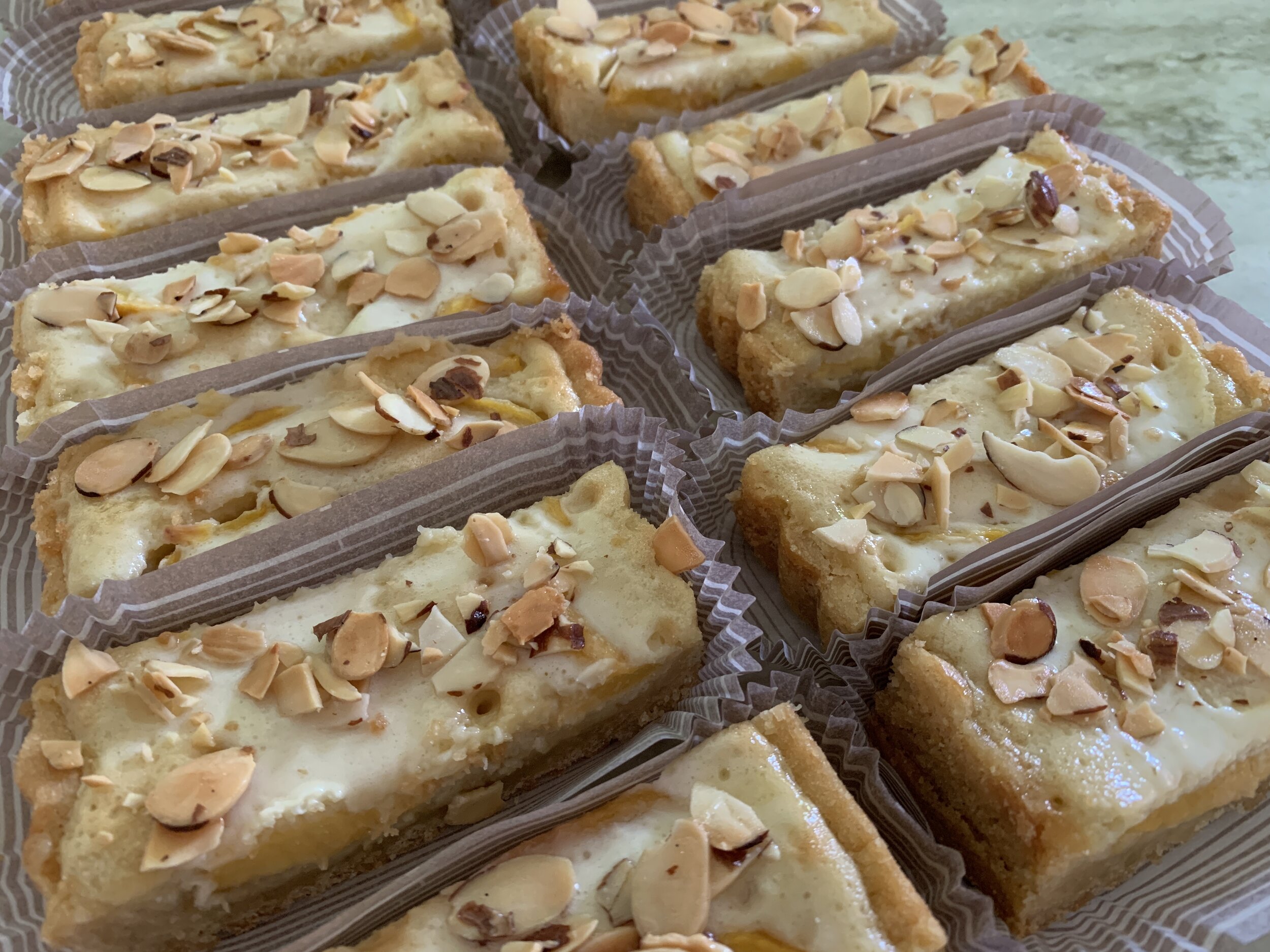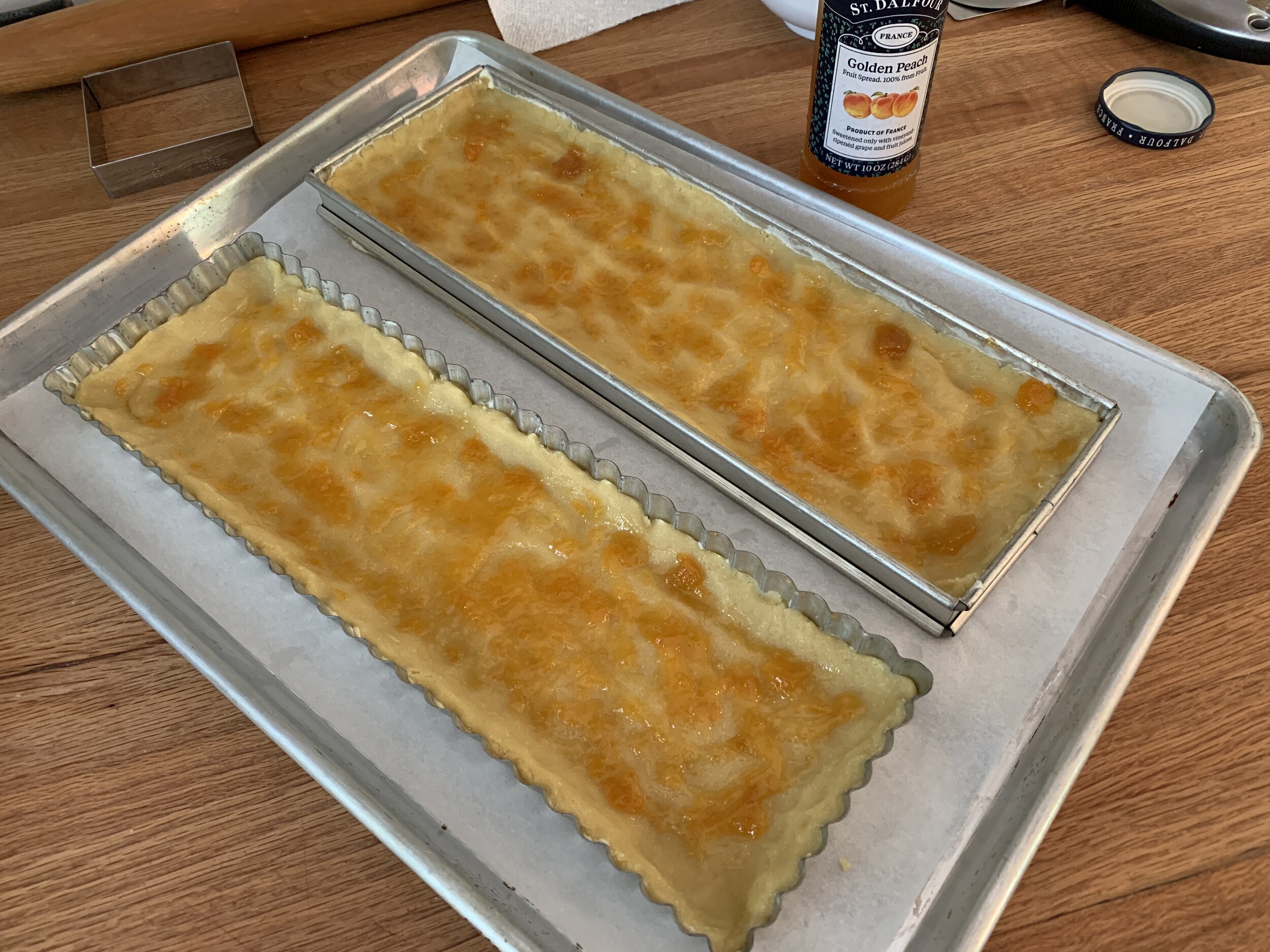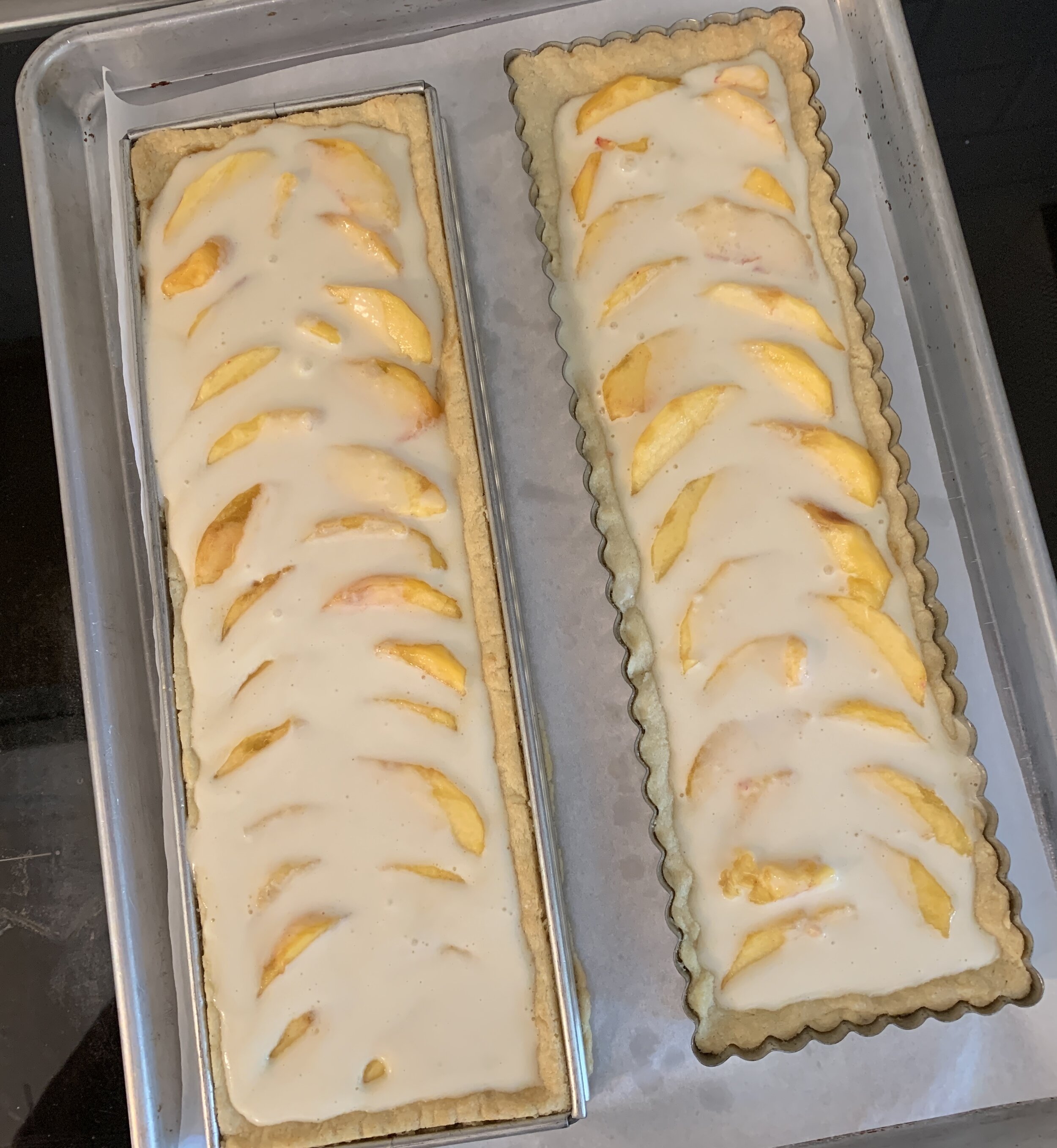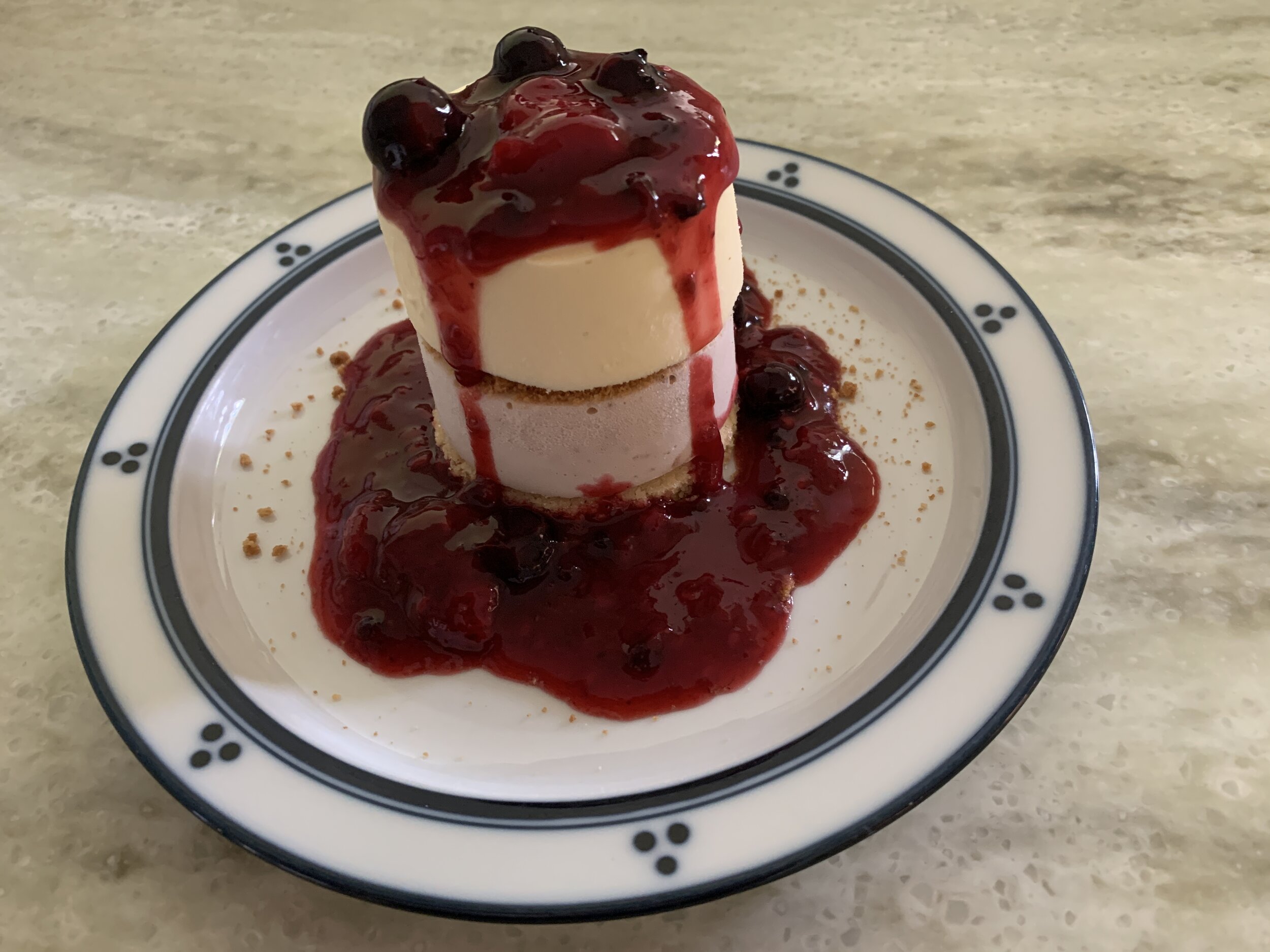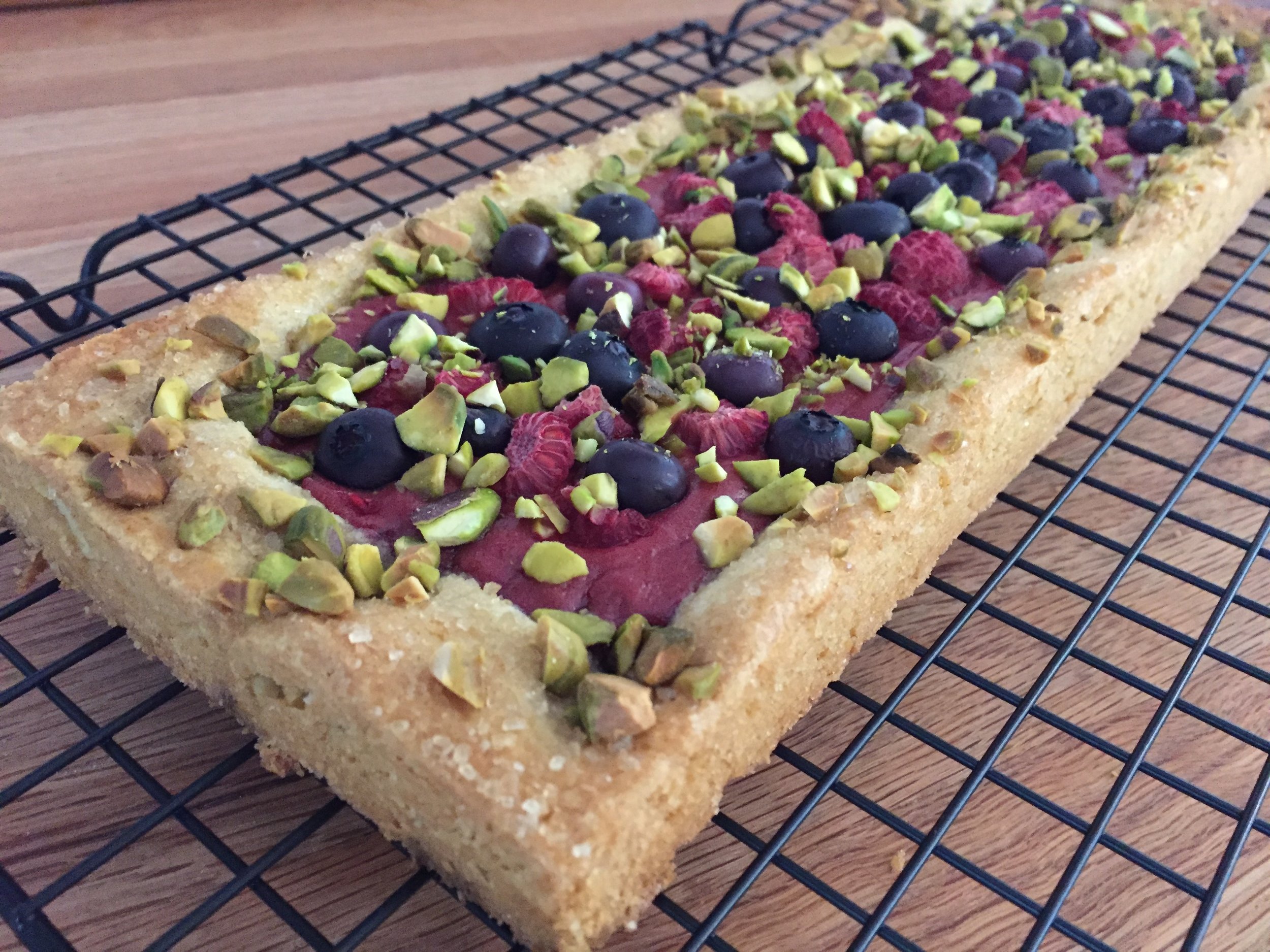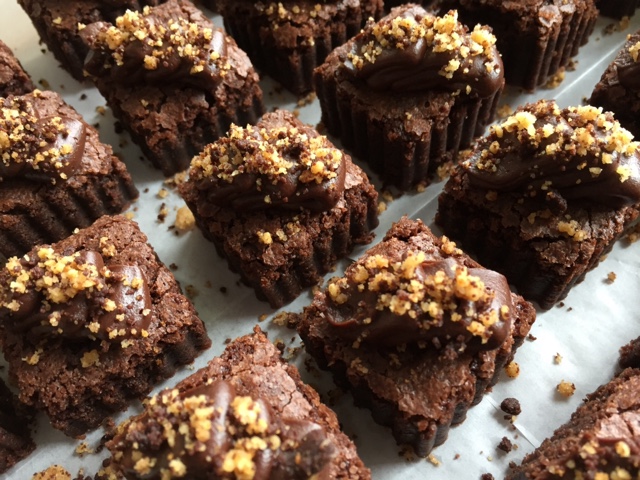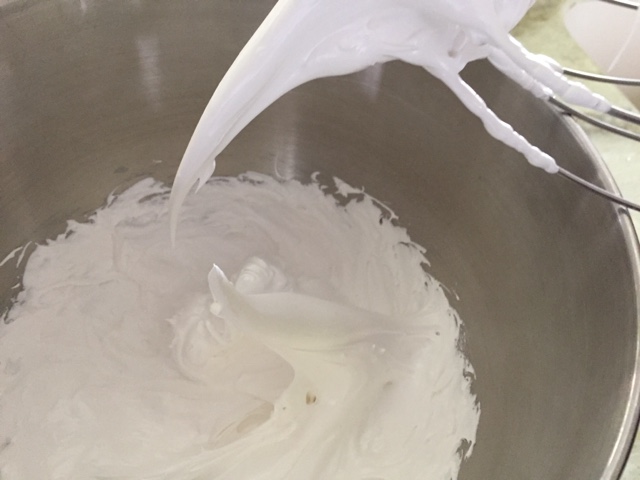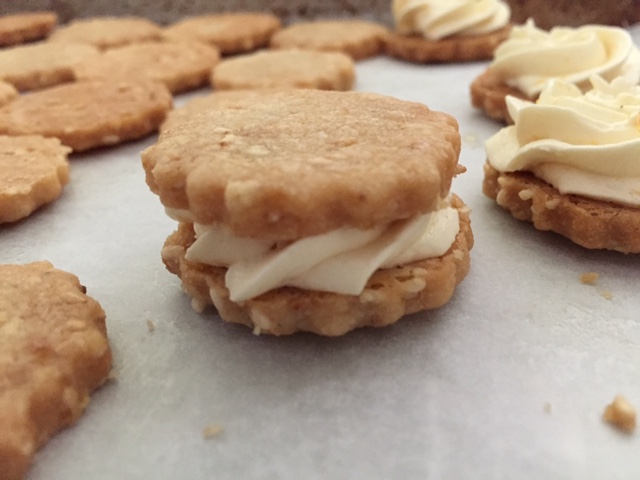Peaches and cream Breton tart
/Oooh my, soooo good! My favorite Breton dough, a thin layer of peach jam, fresh Michigan peaches and an easy custard all baked up into a golden buttery treat. What more could you want on a summer August day?
August and fresh peaches go hand and hand for me. Growing up, my early August birthday dessert choice was most often pound cake with fresh peaches and ice cream. Oh those memories.
Being in a tart mood as I planned some assorted treats for folks down the street, I knew a Breton dough base would be just the thing. While I typically make individual portions for such occasions, my brain asked - how about slices for a change? Two rectangle tart forms coming right up.
I’ve written several times about the beauty of using Breton dough for its versatility. Bake it thick and plain to create a gateau Breton, roll it more thinly and bake it topped with jammy fruit and crumble or make simple crisp cookies to go with your afternoon tea.
When making Breton tarts, I lean towards a thicker base crust to put the texture somewhere between cookie and cake. Thicker more cake-y, thinner more crisp.
As you see below, the straight sided form is slightly wider so I gauged my dough quantity to give me a thickness of about 3/8”, ending up with 400 g of dough for the slighter smaller fluted form and 475 g for the straight sided one. Butter the forms (it helps so much with removal later - trust me).
Place the dough between plastic wrap and roll or press it into its rough shape . . . . .
then transfer it into the form, pressing it evenly and also building up an edge to provide a dam for the upcoming custard. Please note - I left the bottom out of the fluted form - I’ll come back to that later.
Once both forms are “doughed” up, place plastic wrap directly on the dough surface to cover and chill until ready for assembly. The lining step is one you can complete even a couple of days ahead if desired. While the chilling step isn’t absolutely essential, I find that dough always bakes a bit better when it’s cold going into a hot oven.
Heat the oven to 350ºF. Spread a thin layer of peach jam over the dough and bake about 20 minutes to set the dough. You should see the dough risen up and starting to brown a bit.
A quick jam note - every year I contemplate a jump onto the jam making band wagon, yet thus far that process hasn’t finagled its way into my summer repertoire. There are some wonderful jams to be found on well stocked supermarket shelves. I lean toward French made brands like St. Dalfour and Bonne Maman which both offer an interesting line up of flavors.
Before baking
The par-baking gives me just the amount of time I need to prep my fruit and make my easy custard.
Par-baked
For the custard: in a medium bowl whisk together 80 g cane sugar, 160 ml heavy cream, 2 large eggs, 1.5 tablespoons all purpose flour, 25 g almond flour, 1/2 teaspoon ground coriander, a few grates of fresh nutmeg and a splash of vanilla extract. You can leave out the spices if you prefer and, instead of vanilla, add 1/2 tablespoon of peach brandy or your favorite almond liqueur.
The beauty of this custard filling is not only its ease of preparation but you can whip it up earlier in the day and hold it in the fridge - when ready, give it a quick re-whisk to bring it all back together.
Two ripe peaches for each tart were perfect - peel, slice and line them up something like this.
Carefully pour the custard over the peaches as far up to the edges as you can without overflowing (whoops - a little bit there on the left). There will most likely be a bit of custard left.
Bake for 10-15 minutes to start setting the custard and then you should be able to add the remainder, drizzling it over the top. Don’t worry it you don’t use quite all of it.
Bake for an additional 20-30 minutes until the custard is set, a bit puffy and nicely golden.
Looking pretty good!
Cool for 5-10 minutes then gently loosen the edges using a paring knife or offset spatula to reduce the stick factor from any stray custard. As noted on the left above, Breton dough can sometimes sneak out under the edges of open tart forms during baking - just trim away any edge bits.
Cool an additional 30 minutes or so. The straight sided open form should lift off pretty easily. With a removable bottom fluted form, double check that the curvy edges are free before pushing the bottom up to lift it out of the form. Let cool to room temperature.
NOTE: you may have noticed I baked my fluted tart WITHOUT the removable bottom. I find the crust browns more thoroughly that way. For ease of release, I pop it into the freezer for 20-30 minutes to finish cooling and firm it up. It’s much less fragile that way and is easier to remove from the form.
This tart keeps in the fridge a couple of days at least. Slice into rectangles and top with candied almonds for serving.
For the almonds: oven at 350ºF; parchment lined sheet pan; place 1/2 cup sliced almonds in a medium saucepan along with 1/4 cup sugar, 1/4 cup water and 1/4 teaspoon kosher salt; bring to a boil over medium heat and cook 1 minute; strain (discard the liquid) and spread the nuts on the prepared sheet pan; bake ~15 minutes, stirring half way through, until nicely browned; let cool. Keep in a covered container at room temperature and enjoy as a garnish on whatever you fancy!
Let’s just say that all of those who tasted these delectable slices (including Steve, the tasting maestro!) were very happy indeed. I love that.
Summer’s waning, autumn’s coming. Meanwhile please take care of yourselves and those you love.
Lovely color at nearby Meijer Gardens

